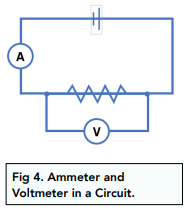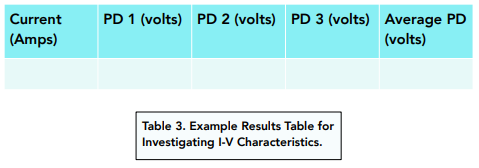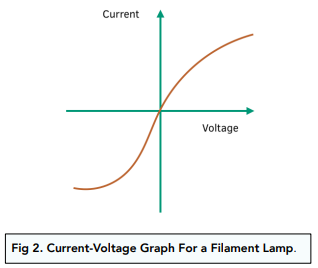Investigating Current-Voltage Characteristics (GCSE Physics)
Investigating Current-Voltage Characteristics
Measuring Current and PD in a Circuit
Current in a Circuit
- Current is measured with an ammeter. As we learnt before, in order to measure current in a circuit, we have to use an ammeter. This will give us a value for the current in amps.
- Ammeters must be in series. The ammeter must be connected in series. In a series circuit, the current through every component will be the same. By connecting the ammeter in series, we can gain accurate values for the current through any of the components in the circuit.
Potential Difference in a Circuit
- Voltage is measured with a voltmeter. As we learnt before, in order to measure pd in a circuit, we have to use a voltmeter. This will give us a value for the potential difference in volts.
- Voltmeters must be in parallel. The voltmeter must be connected in parallel. In a parallel circuit, the potential difference through every component will be the same. By connecting the voltmeter in parallel, we can gain an accurate value for the potential difference across which the voltmeter is connected.

Investigating I-V Characteristics
We can investigate the I-V characteristics of three different circuit elements: a filament lamp, a diode and a resistor at constant temperature.
The graphs are the same ones we studied in the previous tutorial.
Method for Filament Lamp
- Set up a circuit. Set up a circuit with a cell, an ammeter, variable resistor and a filament lamp in series. Attach a voltmeter in parallel across the filament lamp. In the experiment, we need to ensure that the temperature stays constant.
- Alter the current. Change the current in the circuit by moving the variable resistor. This will change the resistance in the circuit, therefore altering the current flow through the filament lamp.
- Record values for current and voltage for a given resistance. For a given resistance, record a value for the current (from the ammeter) and the potential difference (from the voltmeter), in the results table below.
- Repeat step 3 two more times. Repeat step 3 twice. You should keep the same resistance, so the current stays the same, but you might get slightly different values for potential difference. After, find an average pd for each value of current. This step improves reliability.

For a filament lamp, the graph should look like this one below. The graph has negative values for current and PF because we switched over the wires to reverse the direction of current flow.

You can repeat the experiment with a diode and a resistor. These will give you different graphs.





Still got a question? Leave a comment
Leave a comment